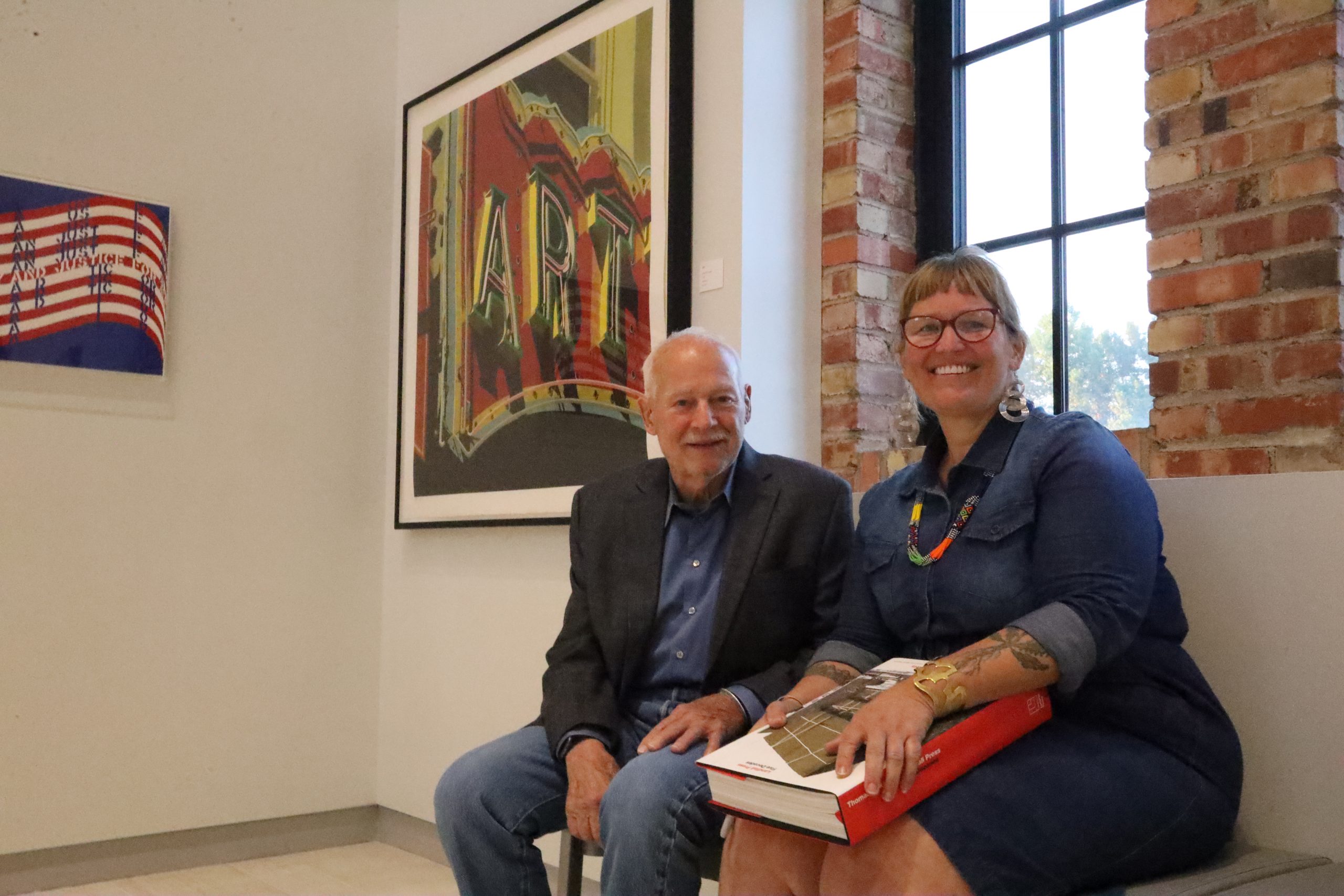STORY BY CAITLIN LEIKER
VIDEO BY TIM SCHOEPFLIN
PHOTOS BY KIERNAN McCARTY
Landfall Press: Five Decades Exhibition opened in FHSU’s Moss-Thorns Gallery of Art on Sept. 16, and will remain open until Oct. 28. The exhibition features 96 works by master printmaker and founder of Landfall Press, Jack Lemon, illustrating an evolution of printmaking over the past 50 years.
FHSU Printmaking professor Juana Estrada Hernandez and Interior Design instructor Colin Schmidtberger coordinated the scheduling and transportation of the gallery from Landfall Press in Santa Fe.
Moss-Thorns stands as the exhibit’s inaugural show and the first traveling exhibition that Fort Hays has ever hosted. The next stop is Knoxville, Tenn.
“We were so thankful that Jack was willing to allow Hays, Kansas to showcase his work,” Schmidtberger said. “This is not only great for Fort Hays, but it’s great for the community and the surrounding communities to be able to come in and see work that they would normally have to travel four [or more] hours to go and see.”
Lemon himself was present for the exhibition set-up and the opening reception, talking to FHSU students and faculty.
There are many different printmaking techniques, but they all follow the same general process.
According to the art education organization Visual Arts Brampton, “The printmaker draws, etches or carves an image onto a printing matrix – such as a stone or a metal plate. The matrix is then coated with ink, covered with a transferring base – such as paper or fabric – and then printed with a roller press or a hand press. The resulting print is often identical to the image first put onto the matrix. Numerous copies can be made from one matrix. A printmaker may use this art medium for solely artistic purposes or for commercial productions.”
The earliest example of printmaking was done with a wooden block on silk, dating back to the Han Dynasty in China, sometime between 206 B.C. to 220 A.D. The first prints done on paper took place around the 7th century.
The concept of movable type was also introduced by the Chinese between 1041 and 1048. This technology evolved until it became a means of mass production in the 14th-15th centuries, most commonly associated with Western works like the Gutenberg Bible (named for Johannes Gutenberg, who perfected movable type during this time period).
Now, centuries later, printmaking is everywhere. An ever-growing art discipline emerged from a basic means of mass production. Printmaking is also considered interdisciplinary in the art world– knowledge of the printing process can help enrich any artist’s work.
Lemon helped facilitate this enrichment through countless collaborations. However, he himself did not discover printmaking until he attended the Kansas City Art Institute. He went on to found the first branch of Landfall Press in Chicago in 1970.
The title of “master printmaker” is given to those who are specialized printing technicians with many years of experience. Master printmakers also often own and operate their own studios or shops to help bring the work of other artists to life.
Schmidtberger referred to Lemon’s work and printmaking in general as “a really unique form of art that will never go away.”
“He was very passionate about helping the artists through the process, capturing exactly what they were wanting out of the artwork, and representing them as themselves,” Schmidtberger said. “To be able to showcase a master printmaker’s work is quite incredible because of the scale, the amount, and the different types of printmaking that are showcased.”




























